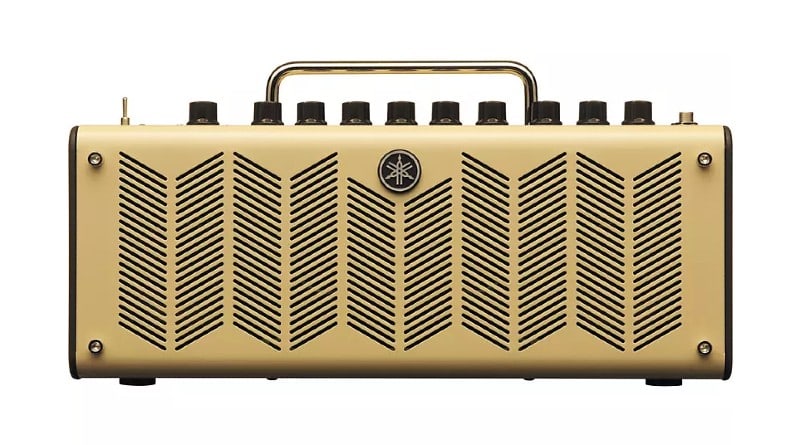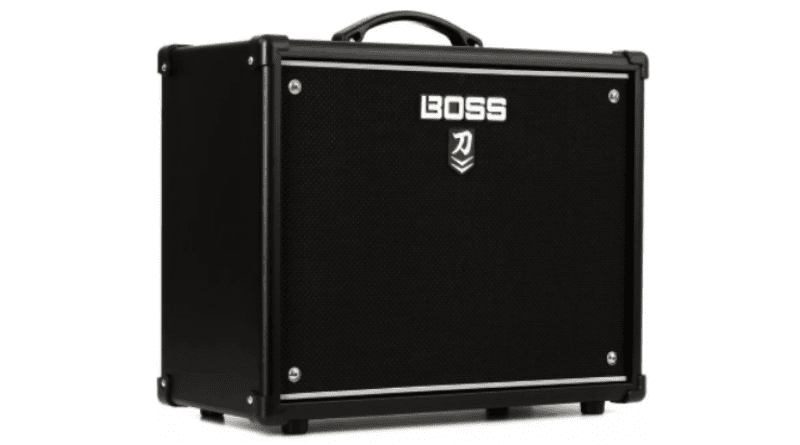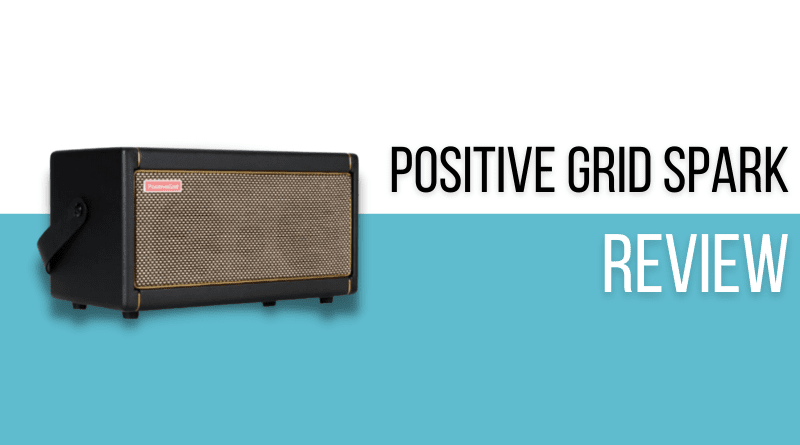If you’ve ever searched for guitar related products online, there’s a pretty good chance you’ve come across the flashy advertising for the Positive Grid Spark, a compact desktop amp made by US based music software company Positive Grid.
When Positive Grid started out back in 2013, they were solely a software company, making plugins for players who had already joined the digital revolution. In 2019, the company announced and started selling their first physical product, the Spark, a desktop modeling amp that featured revolutionary software and class leading sound quality.
In this KillerGuitarRigs Review, we took a deep dive on the Positive Grid Spark to find out whether or not it lives up to the huge buzz around it.
Read more about our review process.
Contents
Who Is This For?
The Positive Grid Spark is a compact desktop amp that suits literally every category of player. Whether you’re a beginner and it’s your only amp, or you’re a touring pro looking for something portable that sounds fantastic, this amp works.
The inclusion of the amp models and FX built in to this unit makes it hugely dynamic, the software that it comes with makes it easy for beginners to learn and play along with their favorite songs, and more advanced players will appreciate the customization options that it provides.
Appearance / Features / Controls
The Spark really looks fantastic, the design is classic with a black textured vinyl covering, and the black and brown grille cloth was a pretty unique touch that we liked a lot. The rounded edges on the cabinet really gave the impression that it was a well thought out design with effort put into its construction.
This is a 40 watt desktop amp, with a pair of 4” speakers providing the sound. Despite the small size, this amp is plenty loud enough for a low key practice session or jam.
It had a top mounted control setup, which makes it look a lot like an amp head. The controls include the amp voice selector on the left, which had options for bass guitars, acoustic guitars, and 5 models for electric guitars, including Clan, Glassy, Crunch, Hi-Gain, and Metal.
One dial over was the physical gain knob, and then you’ll find the range of EQ dials. This amp has full 3 band EQ adjustability, so you’ll see bass, mid and treble dials to let you dial in your tone just the way you like it.
There is a master volume dial, and even knobs to control the built in modulation, delay, and reverb FX. All the way to the right you’ll find the main output control.
Above the dials there was a tap tempo switch for the delay, and we loved that it featured a built in tuner that could be accessed via a long push on the tap temp button.
The headphone out socket was 3.5mm so it’s clearly designed to accommodate the majority of consumer headphones, not necessarily studio monitors – something to be aware of if you only have cans with a ¼” jack.
On the back of the unit, we found the connectivity options, including the USB out which is used for uploading patches/presets, and can even be used for recording, turning the spark into an interface. Additionally, there was an aux in socket, and the Bluetooth indicator light.
Performance/Sound
After getting set up and plugged in, we went about checking how good each of the preset voicings sounded across the volume ranges. The initial observation was just how bass heavy it was – it reminded us a lot of a Bose speaker. We found ourselves playing with the bass dial turned way down, which netted great results.
We started the test in the clean setting, which we have to say was exceptionally clean sounding; very crisp and bright, and we found it to be the best setting for recording through a DAW.
In the Glassy setting we found it to be really well articulated, with a huge amount of presence in the upper mids and at the top end, especially with the bass knob dialed back.
In the Crunch setting we found it to be very organic sounding, without the harsher tones that can sometimes plague smaller amps trying to achieve natural sounding breakup. It retained the clarity we wanted and was really ear pleasing from at volumes, and even when cranked.
The Hi-Gain setting was one of our favorites, it was reminiscent of a Tube Screamer tone, and worked really well for a range of genres, from blues to hard rock. It gave us plenty of breakup, and still provided us with good note separation when we needed it.
Finally, we moved on to the Metal voicing, which was fine, but probably our least favorite of the preset voicings. With such prominent bass from this unit we found it was prone to muddiness, particularly at lower volumes.
The Spark also came with 40 built in effects, all inspired by famous models. They’re build from Positive Grid’s fantastic plug ins, and we absolutely loved the app interface when selecting pedals, cabs, and amps. If the 40 built in FX aren’t enough for you, there are close to 10,000 additional amp models, cabinets and pedals available for you to download on the Spark App.
One of the coolest features of the spark app was the Smart Jam functionality. Smart Jam uses AI to learn how you play, then automatically plays a bass and drum track for you to jam along to. We found that it worked surprisingly well, and we really enjoyed the feature.
Another great feature is the auto chord detection, which let us play any song, and as the app detected it, it literally taught us the chords to play along with the song – no Googling required!
Other Amps to Consider
The Positive Grid Spark is a great amp, but it lives in a hotly contested segment. Here are some other amps to check out if you’re not 100% sold on the Spark.
Yamaha THR10

The THR10 from Yamaha (full review here) has half the power of the Spark, but it’s still a worthy competitor. It’s easily the best looking desktop out there, it offers incredible build and sound quality, and also offers excellent app functionality, with thousands of plugins available from within the app and from the online community. The room filling stereo on this amp is out of this world, and it’s been a KGR favorite ever since we tested it.
Boss Katana 50

The Boss Katana 50 is a fantastic alternative to the Spark (full comparison here). Thanks to its full 12” speaker and 50 watt power rating, it’s perfectly capable of keeping up with a drummer, making it a more versatile option than the Spark or the Yamaha. The preset sounds are amazing, and the fact that it can load practically any boss pedal right from its companion software is incredible. It does lose out some by not having iOS compatibility for the app, but the Boss Tone Studio software works on both mac and PC.
Final Thoughts on the Positive Grid Spark
The Positive Grid Spark is a great practice and desktop amp for anybody looking for something highly portable that looks nice enough to slip into any room unnoticed. The sound quality is excellent, and while the heavy bass response might not be for everyone, it does also mean that it makes an excellent Bluetooth speaker, giving you true dual use.
We loved the build quality, and we especially loved the slick app interface. It was very easy to use, and getting good tones took no effort whatsoever. Overall, a solid choice, and at the price, it also represents pretty good value for money.
Check out these other articles you might like:


